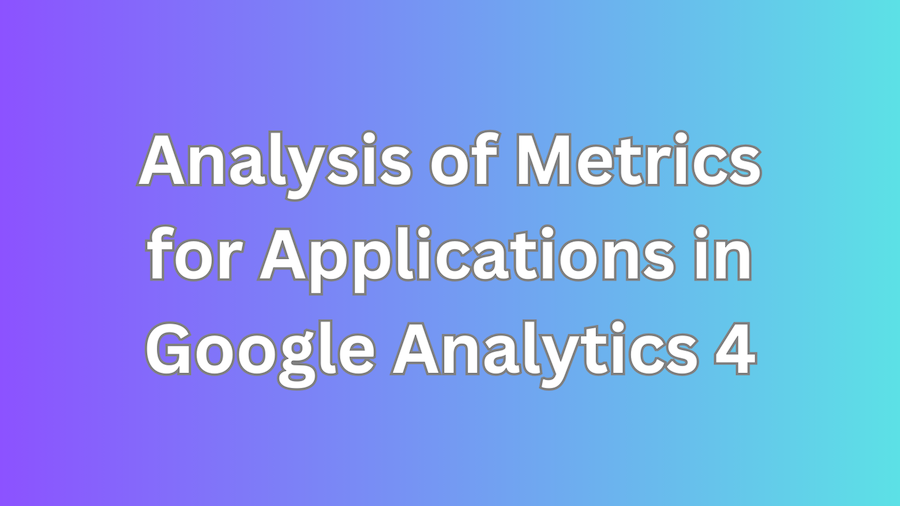As digital landscapes evolve, the significance of app analytics becomes increasingly pronounced. For professionals dedicated to optimizing user experiences and improving application performance, integrating your app with Google Analytics 4 (GA4) is a foundational step. However, the true value of GA4 lies in its metrics, which serve as critical indicators of user behavior, app performance, and overall engagement. Understanding and leveraging these metrics can drive strategic decisions, enhance user retention, and ultimately contribute to the app’s success.
The Strategic Importance of Metrics in App Analytics
Metrics are not just numbers; they are narratives that provide insights into the user journey. Accurate metric analysis can illuminate how users interact with your application, highlight friction points that could lead to uninstalls, and measure the impact of new features or updates. Moreover, these insights are crucial for making data-driven decisions that enhance user satisfaction, increase retention rates, and boost engagement and conversion metrics.
Key Metrics in Google Analytics 4
In GA4, several metrics stand out for their ability to offer deep insights into user behavior and app performance:
- Active Users: This metric counts the number of unique users who have interacted with your app or website within a specified timeframe. A user is considered active if they have engaged in a session, triggered the
first_visitorfirst_openevent (for apps), or registered anengagement_time_msecevent, which tracks the time spent engaged with the app. - Total Users: Unlike Active Users, this metric captures the total number of unique users who accessed your app or website over a given period, regardless of how long they stayed.
- DAU/MAU Ratio: This ratio compares Daily Active Users (DAU) to Monthly Active Users (MAU), offering insights into daily retention within the context of the monthly user base. A higher DAU/MAU ratio indicates strong daily engagement.
- WAU/MAU Ratio: Similar to the DAU/MAU ratio, this metric compares Weekly Active Users (WAU) to Monthly Active Users, providing a weekly perspective on user engagement and retention.
- DAU/WAU Ratio: This ratio measures the proportion of Daily Active Users to Weekly Active Users, helping to understand daily user activity within the weekly engagement framework.
- PMAU/DAU Ratio: This metric assesses the percentage of Monthly Active Users who have made a purchase, highlighting customer loyalty and purchase frequency. A high PMAU/DAU ratio indicates a strong correlation between engagement and monetization.
- PWAU/DAU Ratio: This metric is similar to PMAU/DAU but focuses on Weekly Active Users who made purchases, providing insights into short-term purchase behavior.
GA4’s Automatically Collected Events
Google Analytics 4 simplifies tracking by automatically collecting certain events, which are pivotal for app analysis:
- app_remove: This event is triggered when a user uninstalls your app, providing data that can be analyzed to understand why users may be abandoning your app. Monitoring uninstall rates and correlating them with specific actions or periods can reveal critical insights into user dissatisfaction or technical issues.
- app_clear_data: This event is logged when a user clears the app’s data, indicating a significant reset action. Understanding the frequency and circumstances of this event can help identify issues with app functionality or user experience that may lead to this drastic action.
- app_update: Recorded when a user updates your app to a new version, this event provides insights into how quickly users are adopting updates and whether these updates are positively impacting user engagement.
Enhancing App Store Optimization (ASO) through Analytics
While Google Analytics 4 provides robust data on in-app behavior, optimizing your app’s visibility in app stores—commonly referred to as App Store Optimization (ASO)—requires a broader set of metrics. Although GA4 does not directly integrate with platforms like Google Play Console or App Store Connect, it is essential to track metrics such as:
- App Detail Page Visits: The number of users who visit your app’s detail page in the app store is a critical metric for understanding the effectiveness of your ASO efforts. High visit numbers suggest successful marketing and visibility strategies, while low numbers may indicate a need for improved keywords, descriptions, or promotional efforts.
- Acquisition Rates: This metric tracks the number of users who install the app after visiting the detail page. A high acquisition rate indicates that your app’s presentation (including screenshots, reviews, and descriptions) is compelling and effectively converting visitors into users.
- Conversion Rates: Monitoring how well your app converts visits into installs is crucial. This involves analyzing the ratio of app detail page visits to actual installs, providing insights into the effectiveness of your app’s marketing and presentation.
- Installation Base: Understanding the total number of installations is fundamental for gauging your app’s reach and market penetration. Additionally, analyzing the proportion of active users to the total installation base can provide insights into user retention and engagement.
- Failure Rates and User Feedback: Keeping track of technical issues reported by users, as well as their overall satisfaction through reviews and ratings, is essential for maintaining a positive app experience. High failure rates or negative feedback can significantly impact your app’s success and should be addressed promptly to prevent user churn.
Conclusion
In summary, the metrics available in Google Analytics 4, when combined with supplementary data from platforms like Google Play Console and App Store Connect, provide a comprehensive toolkit for app developers and marketers. By meticulously analyzing these metrics, you can optimize your app’s performance, enhance user engagement, and ensure sustained success in an increasingly competitive market.


